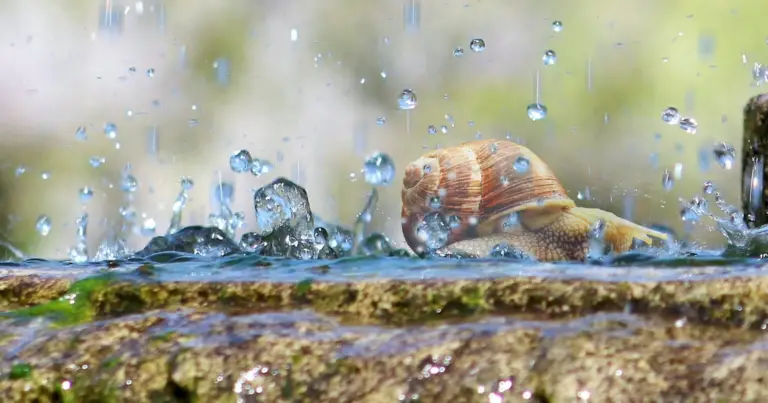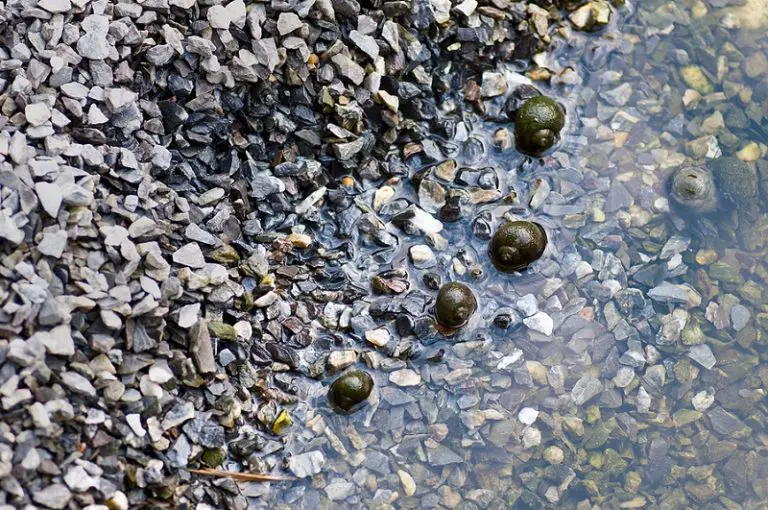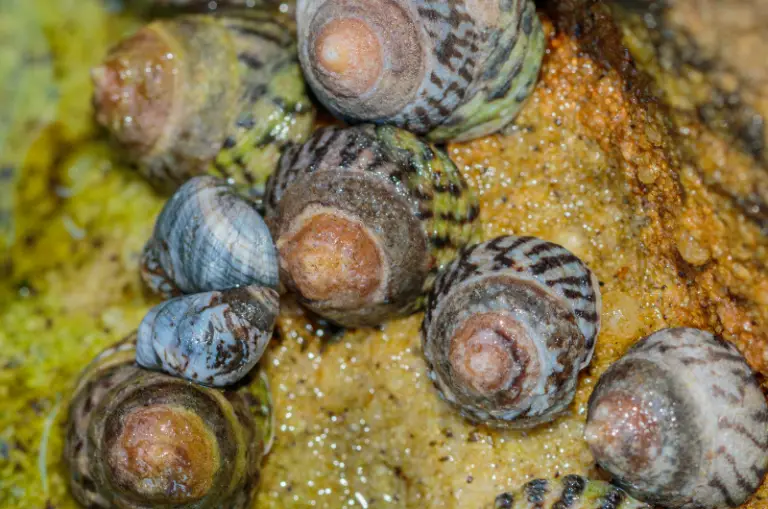Types of Nerite Snails: An In-Depth Guide for Aquarists
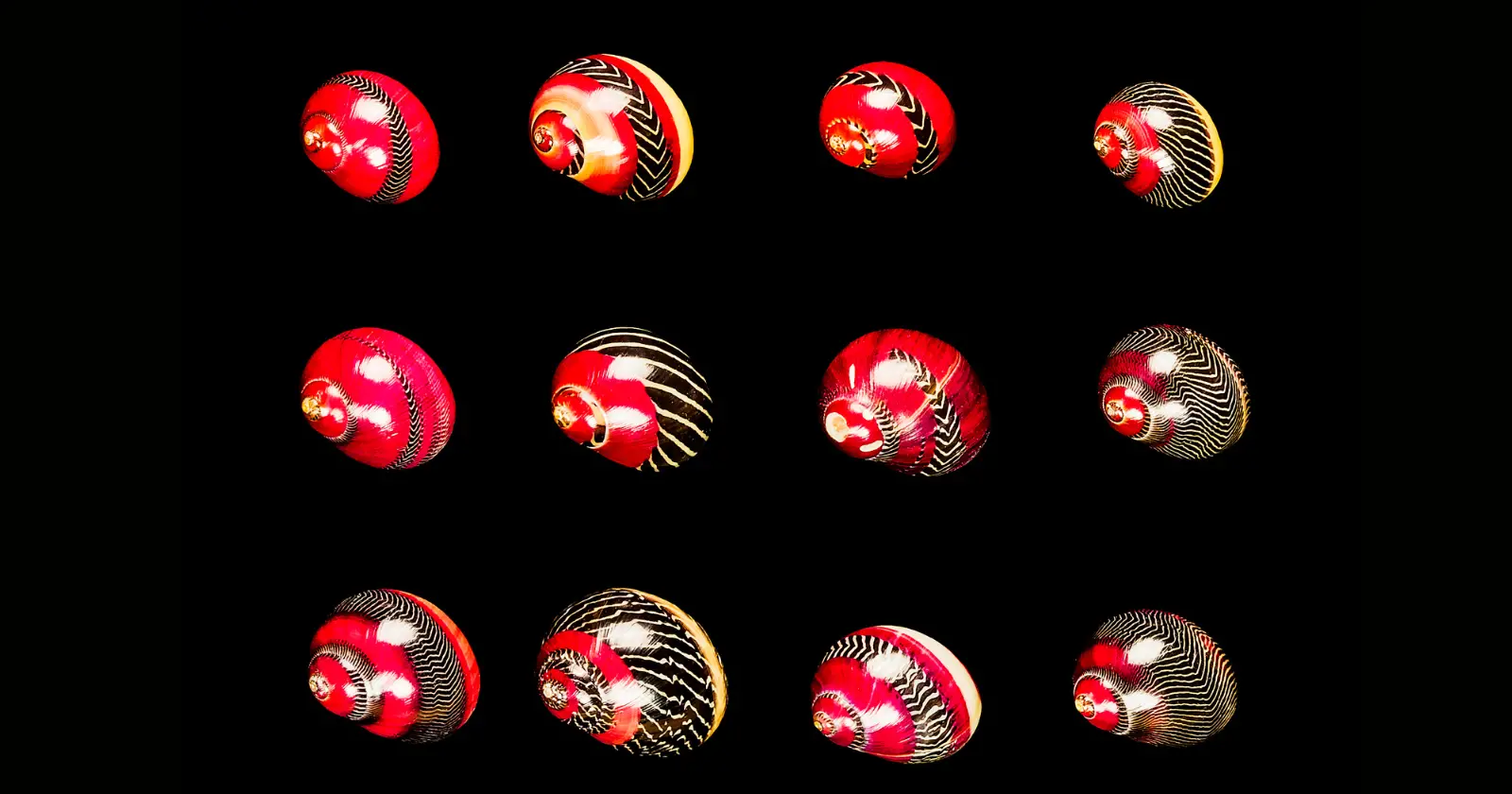
Searching for Types of Nerite Snails? You’re at the right place. Nerite snails are fascinating creatures in various sizes, colors, and patterns, making them a favored addition to many aquarium hobbyists’ tanks. They are known for their impressive algae-eating abilities and undemanding care requirements. There is a nerite snail with numerous species to suit every aquarium enthusiast’s taste.
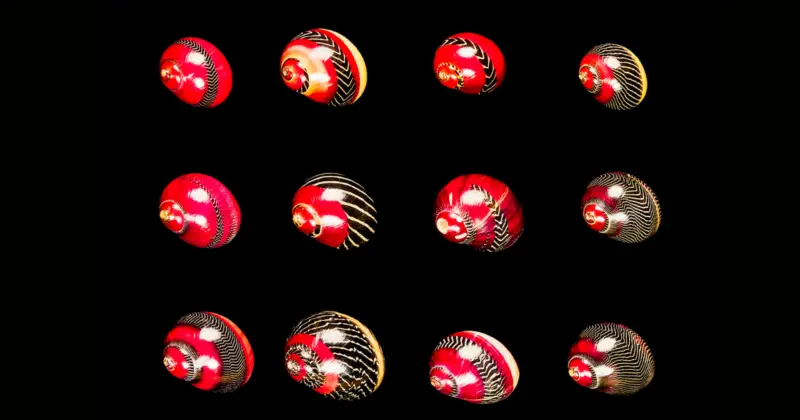
To give you an idea of the variety of nerite snails available, consider species like the Black Racer nerite snail, which comes in different colors such as red and gold, and the Red Spotted nerite snail with its distinctive shell pattern. Other popular nerite snails include the zebra, olive, and tiger variants, each with unique shell markings. This article will explore the different types of nerite snails available and their ideal care conditions.
By familiarizing yourself with these types and their respective care needs, you can select the perfect nerite snail for your aquarium and create a thriving environment for your aquatic friends. Now, let’s dive in and learn more about the fascinating world of nerite snails.
Contents
Table of Contents
Freshwater Nerite Snails: Overview
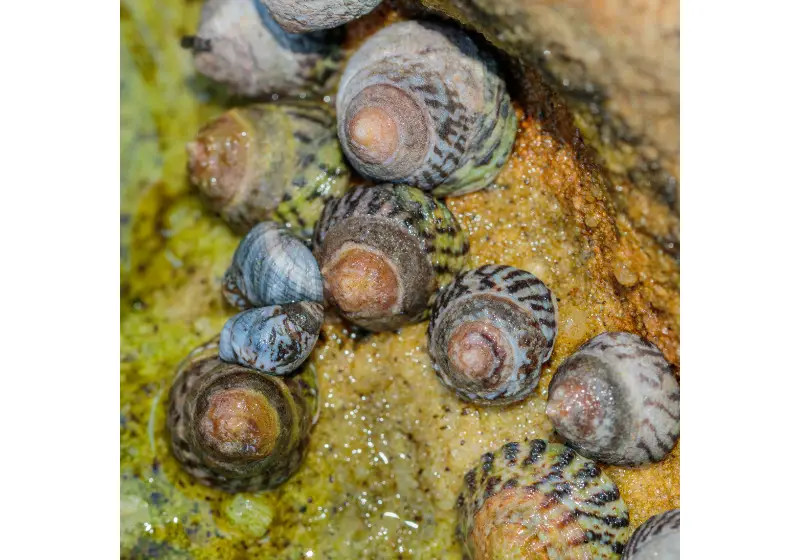
Freshwater nerite snails are popular among aquarium enthusiasts due to their ability to combat algae and maintain a clean tank. Belonging to the family Neritidae, these snails can adapt to various water parameters, making them a versatile addition to your aquarium.
The most common freshwater include Zebra Nerite Snails, Horned Nerite Snails, and Tiger Nerite Snails. Each type sports unique shell patterns; for instance, the Zebra variety has black and yellow stripes resembling a zebra, while the Horned variety boasts sharp horns on the shell. Your choice of snail can be based on your personal preference for appearance.
When housing these snails, it’s important to ensure the tank size and water quality meet their requirements. A minimum of 5 gallons is essential for providing sufficient space for your snails to roam and prevent overcrowding. Monitoring water parameters such as pH, temperature, and hardness is crucial for maintaining a healthy environment. Freshwater nerite snails thrive in water with a pH range of 7.0-8.0 and temperatures between 72°F-78°F.
Remember to feed your snails a balanced diet to support their growth and well-being. During these snails’ well-being or algae-consuming abilities, their diet with high-quality commercial snail food, vegetables, and calcium sources will ensure optimal health. It’s important to note that nerite snails won’t reproduce in freshwater tanks, eliminating the risk of overpopulation.
To summarize, freshwater nerite snails make an excellent addition to your aquarium due to their algae-eating prowess, unique appearance, and ease of care. As you take the plunge and introduce these helpful creatures to your tank, provide suitable living conditions and a balanced diet to promote a healthy ecosystem.
Understanding Nerite Snails
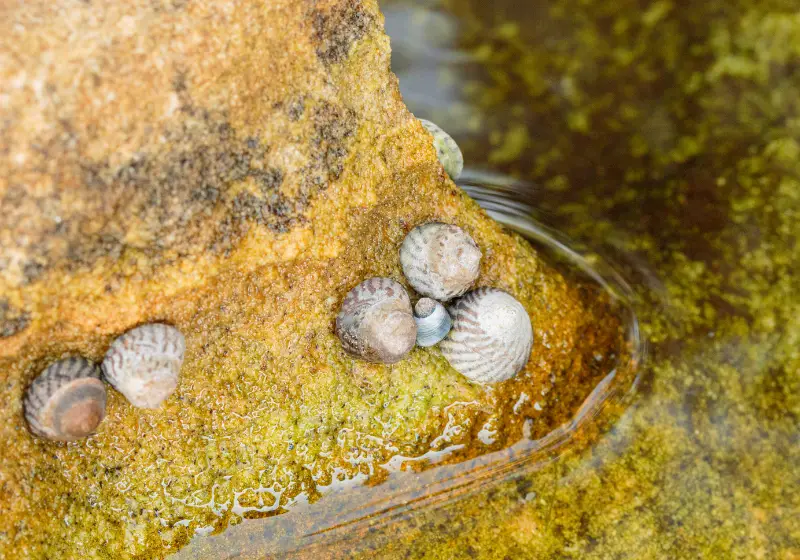
Nerite snails have gained immense popularity in aquariums, and for a good reason. These aquatic critters are known for their endearing appearance, low-maintenance care, and natural ability to clean algae from their surroundings. Let’s dive into what makes these snails unique and perfect additions to your aquatic ecosystem.
To say that nerite snails come in various types would be an understatement. Different types of nerite snails showcase an impressive array of unique shells, making them perfect for adding a touch of visual flair to your aquarium. Some common types include Black Racer, Red Spotted, and Zebra nerite snails, each with a distinct appearance.
Nerite snails are known for being low-maintenance pets. Their care is relatively simple, and they adapt well to the environment of a freshwater aquarium. They are excellent at keeping your aquarium clean, as they help control algae growth by feeding on it. This means you’ll spend less time scraping algae from your tank’s walls and more time enjoying the beauty of your underwater world.
These snails are also quite versatile regarding compatibility with other aquatic life forms. Most nerite snails coexist peacefully within a diverse ecosystem, including fish and other invertebrates. It is vital, however, to research each species within your tank and choose tankmates wisely to avoid predatory interactions.
Nerite snails play an important role in maintaining the ecosystem of your aquarium. They help keep the water conditions stable by consuming decaying plant matter and leftover fish food and controlling algae growth. This process contributes to your aquarium’s overall health and balance, providing a stable environment for all aquatic inhabitants.
When considering adding nerite snails to your freshwater tank, be confident. These little guys will beautify your aquarium with their unique shells and create a cleaner, healthier environment for your other aquatic pets. Remember always to research each species to ensure compatibility and optimal living conditions, and enjoy the benefits of having nerite snails in your underwater world.
Different Types of Nerite Snails

Zebra Nerite Snails
Zebra Nerite Snails, also known as Neritina natalensis Zebra, is a popular type of freshwater snail. They have distinct black and yellow stripes, resembling a zebra pattern. These snails are excellent algae eaters, helping keep your aquarium clean. They thrive in well-oxygenated water with a pH of 7-8.5.
Horned Nerite Snails
Horned Nerite Snails, known as Neritina Clithon corona, have unique, protruding “horns” on their shells. These snails are efficient algae grazers and favor a pH range of 7-8.5. Like other nerite snails, they are relatively easy to care for, but be warned; their spiky appearance might make them less appropriate for tanks with long-finned fish.
Tiger Nerite Snails
Tiger Nerite Snails, or Neritina turrita, have a brown-to-black spiral pattern on their shells reminiscent of a tiger’s stripes. They are compatible with freshwater or brackish aquariums and can withstand similar conditions as the other nerite snail species. Their attractive appearance and algae-eating abilities make them a popular choice among aquarists.
Olive Nerite Snails
Olive Nerite Snails, scientifically known as Neritina reclivata, have a smooth, dark green or brown shell. These petite snails are another excellent addition to your tank, as they consume algae and contribute to a cleaner environment. Their modest size makes them suitable for smaller tanks, and they thrive in the same pH range as their counterparts.
Red Racer Nerite Snails
Red Racer Nerite Snails, also known as Red Spotted Nerite Snails or Neritina natalensis sp, boast bright red shells with intricate black or white patterns. These visually striking snails are easy to care for and efficient at cleaning up algae. Like other nerite snails, they require similar water conditions to thrive.
Black Racer Nerite Snails
Black Racer Nerite Snails, called Neritina puller or Vittina waigiensis, have dark shells with faint gold or red patterns. They inhabit brackish waters and prefer a pH of 7-8.5. Despite their darker appearance, these snails are just as efficient algae eaters as their more colorful relatives. Consider adding them to your tank for their unique appearance and cleaning abilities.
Characteristics of Nerite Snails

Nerite snails, belonging to the Neritidae family, are small to medium-sized snails commonly found in saltwater and freshwater environments. Their unique appearance and ability to keep aquariums clean make them popular among aquarists. In this section, you’ll learn about the characteristics distinguishing nerite snails from other aquatic species.
One notable characteristic of nerite snails is their distinct operculum, a plate-like structure that covers and protects the opening of their shell when they retreat inside. This feature not only aids their defense against predators but also helps them retain moisture during low-tide situations.
Nerite snails exhibit a wide range of colors and patterns, making them visually appealing additions to your aquarium. Some common types include the Zebra Nerite Snail, Horned Nerite Snail, and the Tiger Nerite Snail, each with unique markings. The shell textures can also vary, from smooth surfaces to those with pronounced ridges or horns.
As for their size, nerite snails are generally considered small, with most species measuring between 0.5 and 1.5 inches in diameter. This compact size allows them to thrive in various tank environments and contributes to their reputation as efficient algae eaters.
Regarding habitat, nerite snails are versatile creatures that can adapt to a wide range of water conditions as long as the environment remains stable. This adaptability and peaceful temperament make them an excellent choice for community tanks with other non-aggressive species.
When caring for your nerite snails, it’s essential to understand that although they are primarily algae eaters, they also benefit from a balanced diet. Offering them supplementary food, such as blanched vegetables and sinking pellets, will ensure adequate nutrition.
In summary, nerite snails are an attractive and low-maintenance addition to your aquarium, thanks to their distinctive appearance, small size, and adaptability. Understanding their specific characteristics and needs can create a thriving environment for these fascinating creatures.
Aquarium Life of Nerite Snails

Tank Setup
Nerite snails thrive in well-maintained freshwater aquariums with stable water parameters. A tank size of at least 10 gallons is recommended to provide ample space for these busy little creatures. Provide plenty of hiding spots using rocks, driftwood, and aquatic plants to make your snails feel secure. Maintain a temperature range between 72-78°F and a pH of 7.0-8.5 to ensure their well-being.
Substrate Options:
- Cowellbeing
- Fine gravel
- Flat rocks
Aquarium Mates
When selecting aquarium mates for nerite snails, opt for peaceful species that coexist harmoniously. Ideal tank mates include small, non-aggressive fish, like neon tetras and guppies, and other invertebrates, such as dwarf shrimp. Avoid aggressive fish or those with a penchant for snacking on snails, like loaches and pufferfish.
Compatible Tank Mates:
- Neon tetras
- Guppies
- Dwarf shrimp
Food & Diet
Nerite snails have a voracious appetite for algae, making them excellent natural algae eaters for your aquarium. Though they prefer to dine on algae, supplementing their diet with additional food sources, such as blanched vegetables, ensures they get all the nutrients they need. Occasional feedings of high-quality sinking pellets or algae wafers also boost their nutrition.
Dietary Options:
- Algae
- Blanched vegetables (e.g., cucumber, zucchini)
- Sinking pellets or algae wafers
Water Requirements for Nerite Snails
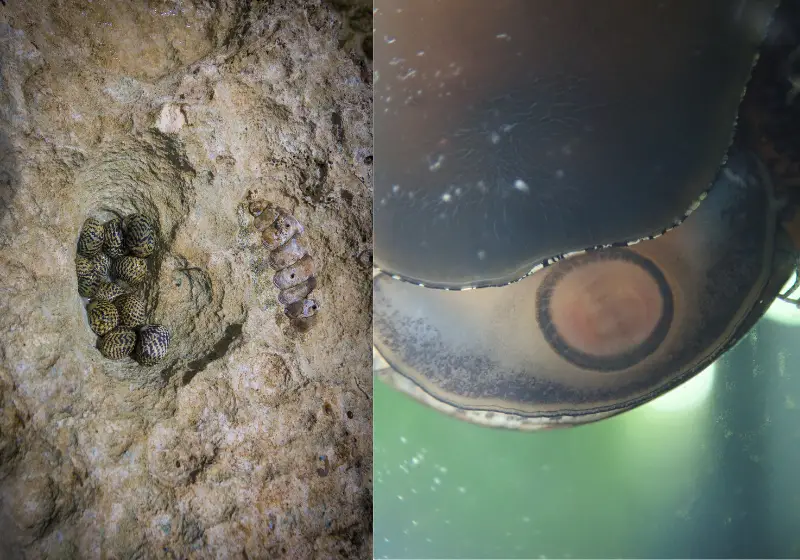
It’s essential to remember a few parameters when maintaining the proper water conditions for nerite snails. As a snail owner, you must ensure the right pH, temperature, and water hardness ranges. Taking care of these parameters will help your nerite snails thrive in your aquarium.
The pH level of the water for nerite snails should ideally be within the range of 7.0 to 8.5. This slightly alkaline environment is suitable for their survival and overall well-being. To maintain a pH level in this range, you must use a reliable aquarium test kit to monitor your well-being. Adjust water conditions with pH buffers or natural methods, including driftwood, rocks, or crushed coral.
Water temperature is another crucial factor for keeping nerite snails healthy. These snails prefer a temperature range between 72°F to 78°F (22°C to 25°C). Maintaining a stable temperature is necessary, so consider using an aquarium heater and thermometer to help you accurately monitor and adjust the water temperature accordingly.
Nerite snails also need the right balance of water hardness. These snails’ general hardness (GH) should be between 6 to 12 dGH, while the carbonate hardness (KH) should be around 2 to 5 dKH. These water hardness levels are essential for supporting snail growth and shell health. You can use aquarium test kits to check and maintain these levels within the suitable range regularly.
Regarding water quality, it’s crucial to keep your aquarium clean and free from harmful chemicals like ammonia, nitrites, and high levels of nitrates. To maintain good water quality, properly cycle your tank and establish beneficial bacterial colonies before introducing nerite snails. Frequent water changes and appropriate filtration methods will also contribute to the desired water conditions for your snails’ well-being.
Though nerite snails are freshwater dwellers, they tolerate brackish water. Some species, such as the zebra nerite snail, may benefit from slightly brackish water conditions, which can be created by adding marine salts to the freshwater aquarium. This small adjustment can also help with egg hatching, as nerite snail larvae require brackish conditions to survive. However, this change is unnecessary for the general care of nerite snails.
By following these guidelines and continuously monitoring your aquarium’s water parameters, you help ensure a suitable environment for nerite snails to flourish and benefit the overall health of your aquatic ecosystem.
Types of Nerite Snails | Different Nerite Snail Varieties | Aquarium Snail Species
Diet And Algae Eating Habits
Nerite snails are well-known for their algae-eating abilities. In your aquarium, these snails can help control algae growth and maintain a clean environment. They are herbivores and primarily feed on various types of algae.
Including algae wafers in their diet is a great way to help nerite snails stay healthy and ensure they have access to enough nutrients. Algae wafers are rich in calcium, which is essential for their shell growth and overall health. You can also supplement their diet with other calcium-rich food sources like cuttlebone.
In addition to algae, nerite snails can also benefit from eating various blanched vegetables. Some good options for your snails include zucchini, cucumber, and spinach. Providing these vegetables ensures your snails get the necessary vitamins and minerals for their well-being.
Remember that nerite herbivores won’t show interesting fish food or other non-vegetarian options. Therefore, focus on providing a diet rich in plant-based foods, especially those that help control algae growth in your aquarium.
By offering a diverse diet of algae, algae wafers, and blanched vegetables, you can support your neurite snails’ role as effective algae eaters in your aquarium. This will help maintain a clean and visually pleasing environment for your aquatic inhabitants.
Breeding of Nerite Snails
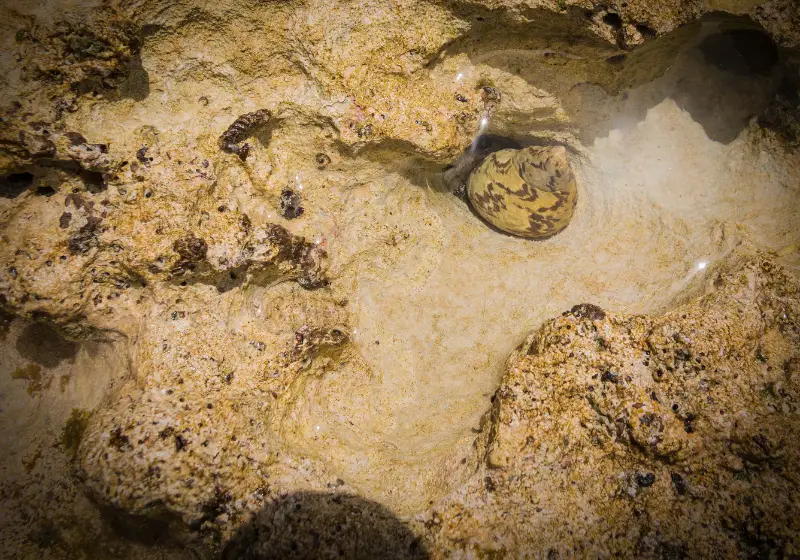
Breeding nerite snails is not as straightforward as expected, primarily because they can only breed successfully in brackish water conditions. Although nerite snails will lay eggs in freshwater aquariums, the eggs will not hatch in freshwater and require brackish water for successful development.
To create an ideal breeding environment for your nerite snails, you should first set up a separate tank with salty water, as they cannot breed in a freshwater aquarium. Maintain the water conditions at a pH level between 7.0-8.5 and a temperature range of 71-79 °F (22-26 °C).
When selecting breeder snails, choose healthy and mature adults, preferably ones that have shown signs of laying eggs in the freshwater aquarium. Moving them to the brackish water tank will encourage breeding behavior and facilitate successful egg development.
Nerite snail breeding is slow, as they reproduce more leisurely than other freshwater snails. Keep a close eye on the tank, as you may see white or yellowish egg capsules on surfaces such as rocks, driftwood, or the tank walls if breeding is successful.
Once the eggs hatch, the larval stages of neurite snails will undergo a series of transformations, eventually turning into fully formed snails. During these early stages, it is crucial to maintain proper water conditions and provide the appropriate diet for healthy growth.
In conclusion, breeding nerite snails requires creating an optimal brackish water environment, selecting mature snails for breeding, and closely monitoring the process from egg laying to hatching. With patience and proper care, you can successfully breed nerite snails and enjoy their benefits to your aquariums.
Health and Wellness of Nerite Snails

Nerite snails are hardy creatures; their lifespan can range from 1 to 2 years with proper care. Keep reading for tips to ensure optimal health and wellness for your nerite snails.
First and foremost, pay close attention to water quality. Maintain appropriate pH levels and avoid any drastic or sudden changes in water parameters, as it can harm your snails. A crucial aspect of water quality is calcium. You should provide a calcium-rich environment to support the growth and health of your neurite snails’ shells. Inadequate calcium can lead to shell erosion, a significant concern for their well-being.
Meeting the ba well-being requirements for nerite snails is well-being forward. Ensure that the tank is clean and free from harmful substances. Although nerite snails will help by eating algae, it’s essential to maintain proper tank hygiene. Your aim should be to create a safe and healthy environment for your snails to roam, feed, and explore. Additionally, avoid housing nerite snails with other aggressive aquarium inhabitants.
When it comes to nerite snail care, focus on their diet. These critters are natural algae eaters, and it is vital to provide a varied diet to keep them healthy. If the algae in your tank runs low, supplement their food with sinking tablets or algae wafers. You’ll promote their health and longevity by nourishing your snails with a balanced diet.
In summary, maintaining the health and wellness of nerite snails involves monitoring water quality, providing sufficient calcium, ensuring proper tank hygiene, and offering an appropriate diet. By following these tips, your nerite snails will thrive in your aquarium, contributing to its vibrancy.
Global Distribution of Nerite Snails
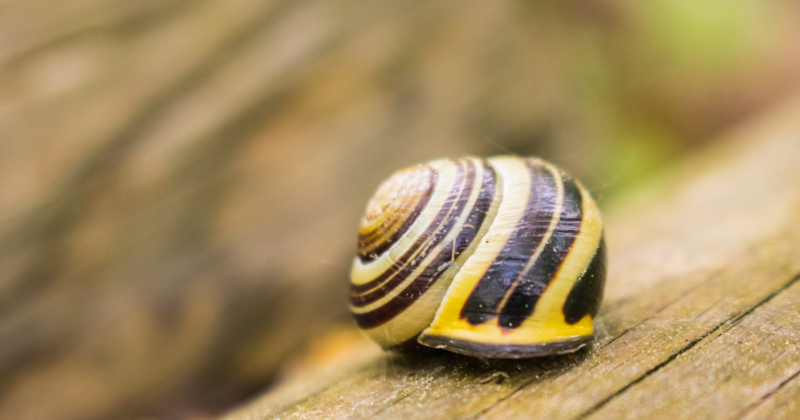
Nerite snails are an intriguing group of small sea snails belonging to the family Neritidae. They can be found in various parts of the world, and their distribution varies depending on the species.
In general, most Nerite snail species thrive in tropical waters. These mollusks are commonly found in the middle and upper intertidal zones, where they habitat near the shoreline. A prime example of this widespread distribution is the Nerita genus, which inhabits tropical waters worldwide.
However, they are not restricted to only tropical regions. Some Neritidae, like the Theodoxus genus, have a wider range and can be found in Europe and Northern Africa. This demonstrates their adaptability to different climates and ecosystems. Neritidae are more prevalent in the southern hemisphere, with species such as Bathynerita naticoidea contributing to their diversity.
If you are particularly curious about their origin in Africa and Asia, you can find some species endemic to specific regions. For instance, the Vittina natalensis species originates in the coastal plain of East Africa, including countries like Kenya, Mozambique, Somalia, South Africa, and Tanzania. These snails have adapted to the local environmental conditions in their native region.
Nerite snails have adapted to various aquatic environments in Asia, including brackish water, freshwater, and marine habitats. They contribute to the biodiversity of the aquatic ecosystems in this part of the world.
To summarize, Nerite snails have a wide global distribution, inhabiting tropical and temperate regions. Their adaptability to various ecosystems makes them an interesting group to study, as they occupy different habitats in Africa and Asia. Remember that while Nerite snails can be found across the globe, their specific distribution and origin vary depending on the species, and each has unique characteristics and adaptations to its environment.
Price and Maintenance of Nerite Snails

Nerite snails are a popular and peaceful addition to freshwater aquariums. Their easygoing temperament and low maintenance requirements make them an excellent choice for beginners and experienced aquarium enthusiasts. This section will discuss the price and maintenance of nerite snails for your aquarium.
When it comes to price, nerite snails are generally considered affordable. You can expect to pay around $4 to $7 per snail, depending on the specific type you choose. Buying multiple snails at once could grant you a more significant discount, making it even more cost-effective to introduce them to your aquarium.
Maintenance of nerite snails is relatively simple. To keep your nerite snails healthy and active, ensure the water temperature within your aquarium is 72-78 degrees Fahrenheit (22-26 degrees Celsius). As nerite snails prefer slightly alkaline water, you should aim for a pH of 7.0 and 8.5.
When it comes to feeding, nerite snails are great algae eaters and help keep your tank clean. Furthermore, you can supplement their diet with additional food sources like algae wafers, blanched vegetables, or spirulina tablets.
Keeping your aquarium clean and healthy is essential since you want your nerite snails to thrive. Perform regular water changes and monitor water parameters closely. Avoid using copper-based medications in your aquarium, which can harm your snails.
In conclusion, nerite snails are an affordable and low-maintenance addition to your aquarium. They contribute to a more lively and clean aquatic environment, all while exhibiting peaceful behavior towards other tank inhabitants. Following the simple guidelines, you can create a safe and healthy environment for your nerite snails to enjoy.
Conclusion: Types of Nerite Snails

In your aquarium, nerite snails can be a valuable addition due to their algae-eating habits and their inability to reproduce in freshwater environments. They come in various types like Zebra, Horned, Tiger, Black Racer, Red Racer, and Olive Nerite Snails. Each type has a unique appearance, giving your aquarium a touch of diversity.
It’s essential to provide a proper environment for nerite snails to thrive. This includes a suitable tank size, clean water parameters, and an adequate diet to ensure their well-being. You should also be aware of potential diseases and monitor their well-being regularly.
When deciding which nerite snails to introduce to your aquarium, be mindful of their compatibility with the other inhabitants. Generally, nerite snails coexist well with dwarf shrimp and other peaceful tankmates. Understanding nerite snails’ care, diet, and breeding will support their growth and contribute to a healthier, cleaner aquarium.
In summary, nerite snails provide aesthetic appeal and practical benefits to your aquarium. By being confident, knowledgeable, and attentive to their care requirements, you can create a harmonious and thriving environment for these algae-consuming allies.
Frequently Asked Questions
What are the common species of Nerite snails?
There are various species of Nerite snails, each with unique shell patterns and colors. Some common species include Zebra Nerite snails, Tiger Nerite snails, and Horned Nerite snails source. They are all efficient algae eaters, and their low reproduction rate in freshwater tanks ensures they won’t overpopulate your aquarium.
How do Horned Nerite snails differ from other species?
Horned Nerite snails (Clithon corona) stand out due to the horn-like protrusions on their shells. These distinctive features give them an attractive appearance, but apart from that, their behavior and care requirements are similar to other Nerite snail sources.
What makes Olive Nerite snails unique?
Olive Nerite snails (Vittina usnea) are known for their smooth, olive-green-colored shells. They are excellent algae eaters, and their unique shell color makes them a popular choice among aquarists looking for an aesthetically appealing addition to their tank source.
Where can I find Nerite snails for sale?
You can purchase Nerite snails at local fish stores or from reputable online retailers specializing in aquarium livestock. Always ensure the retailer has a good reputation and provides healthy specimens to avoid introducing potential parasites or other health issues into your aquarium.
What do Nerite snail larvae eat?
Nerite snail larvae primarily consume plankton and other microorganisms. After hatching, the larvae become part of the zooplankton community, feeding on phytoplankton such as algae and other small organisms. As they mature into adults, their diet shifts to larger algae types and biofilm found on various surfaces in the aquarium.
What is the difference between Batik and Red Racer Nerite snails?
Batik Nerite snails display intricate patterns on their dark-colored shells, resembling the traditional Indonesian batik fabric patterns. On the other hand, Red Racer Nerite snails stand out with their bold red shells and black-striped patterns. Both are popular choices in the aquarium hobby due to their unique appearance, algae-eating capabilities, and compatibility with other tank inhabitants.


